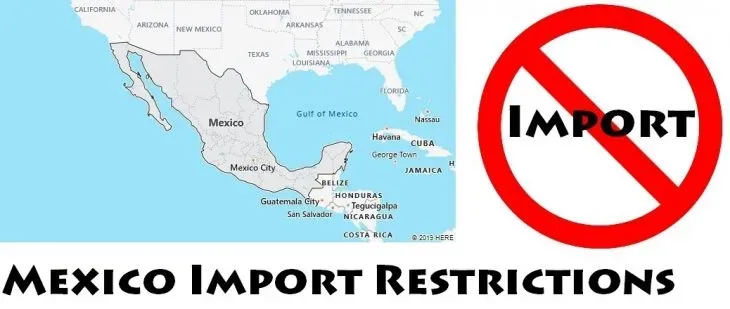Mexico cattle import restrictions are currently at the forefront of a heated discussion surrounding the protection of the United States’ agricultural interests. As the threat of the New World screwworm looms large, officials from the USDA have issued a stern warning to Mexico, emphasizing the urgent need for action. The ramifications of these import restrictions could significantly impact both countries’ cattle industries, reflecting the delicate balance of trade relations in agriculture. With critical USDA agriculture policy hanging by a thread, the pressure is mounting for Mexico to implement robust livestock protection measures. If immediate steps are not taken, these trade restrictions could reshape the landscape of cattle commerce between the neighboring nations.
In light of escalating concerns regarding livestock health, the recent situation involving the importation of cattle from Mexico highlights the challenges faced by both nations. The agricultural sector is poised at a critical juncture as the United States anxiously watches the spread of the New World screwworm, a pest threatening livestock integrity. With the USDA’s agriculture policies dictating the course of action, prompt interventions are necessary to mitigate the risk posed by these invasive species. If Mexico fails to act, severe trade restrictions concerning cattle and other livestock could ensue, disrupting established trade patterns and having far-reaching repercussions on both sides of the border. The urgency of the matter calls for effective collaboration and proactive livestock protection measures to ensure the stability and safety of the cattle industry.
Impact of Mexico Cattle Import Restrictions on U.S. Agriculture
The recent warning from Agriculture Secretary Brooke Rollins regarding potential restrictions on cattle imports from Mexico has sent ripples through the U.S. agriculture sector. With a firm deadline set for April 30, the U.S. government is poised to take significant action that could affect not only the cattle industry but also the broader agricultural economy. As livestock is a foundational element of American agriculture, any trade disruptions could lead to increased prices and supply shortages in the market.
The looming threat of import restrictions underscores the interconnectedness of agricultural industries across borders. U.S. ranchers are on high alert, as the potential halt in cattle imports could restrict gene pool diversity, impacting herd quality and productivity. Given that the cattle industry thrives on consistent trade with Mexico — one of its largest trading partners — these developments could introduce unforeseen challenges and necessitate strategic adjustments to stay competitive.
The Threat of the New World Screwworm and Its Economic Consequences
The New World screwworm represents a significant biosecurity risk for the U.S. cattle industry, as its larvae can devastate livestock and lead to considerable economic losses. Originating from Central America, the pest has been making its way into southern Mexico, prompting urgent action from U.S. officials. The USDA’s reliance on the Sterile Insect Technique (SIT) has been instrumental in controlling the spread of this flesh-eating fly, but the effectiveness of this strategy is now under threat due to operational limitations imposed by Mexican authorities.
If immediate action is not taken to mitigate the screwworm’s spread, American ranchers could face disastrous outcomes. These economic implications extend beyond just the livestock producers, impacting feed suppliers, transporters, and food distributors. The stakes are high, as Rollins emphasized that every day lost allows the pest to establish a stronger foothold, thus magnifying the risk to America’s agriculture and overall food security.
USDA Agriculture Policy and Cross-Border Cooperation
The USDA’s response to the New World screwworm situation exemplifies the critical role of intergovernmental cooperation in addressing agricultural threats. Rollins’ call for an emergency summit reflects a commitment to fostering mutual interests between the U.S. and Mexico, ensuring that long-term strategies for dealing with shared agricultural issues are established. These discussions are essential for coordinating effective pest control measures and minimizing economic fallout from trade restrictions.
Moreover, the USDA’s proposed measures — including long-term operational clearances and duty waivers — highlight the necessity for streamlined processes to enhance the efficiency of pest control initiatives. The collaboration between U.S. and Mexican authorities not only aims to protect livestock but also reinforces the importance of joint efforts in safeguarding the agricultural economy on both sides of the border.
Cattle Industry News: Challenges and Opportunities Ahead
Current developments surrounding cattle import restrictions have captured the attention of industry experts and farmers alike. These restrictions, if enacted, may prompt essential discussions about innovation in pest control and cattle management practices. In light of emerging biosecurity challenges like the New World screwworm, the cattle industry could pivot towards enhanced technology and research initiatives that strengthen agricultural resilience.
As the situation unfolds, there may arise a unique opportunity for the cattle industry to advocate for stronger biosecurity measures and support systems on both sides of the border. Whether through investment in research or improved practices, the industry can benefit from collaborative approaches that involve stakeholders from various sectors to foster sustainable growth amid changing trade dynamics.
Trade Restrictions Mexico: Implications for Future Relations
The potential trade restrictions on cattle imports from Mexico are not just an agricultural issue but also a diplomatic one. The future of U.S.-Mexico relations in the agricultural sector may hinge on how both nations respond to the present crisis. As officials from both sides work to negotiate solutions, the overarching goal will be to safeguard livestock welfare while maintaining robust trade relations.
Additionally, the dialogue sparked by these trade restrictions could pave the way for broader agricultural agreements that address long-standing issues regarding pest control, supply chains, and economic cooperation. This situation serves as a reminder of the importance of proactive measures and swift responses to emerging threats, fostering lasting partnerships that protect both nations’ agricultural interests.
Livestock Protection Measures: A Call for Immediate Action
In light of the urgent threat presented by the New World screwworm, immediate and effective livestock protection measures are critical. Rollins’ demands for unrestricted operations of Dynamic Aviation and full duty waivers highlight the pressing need for cooperation to implement responsive pest control strategies. Without a rapid and effective response, the entire cattle industry could face irrevocable damage.
To effectively combat such threats, stakeholders must work collaboratively to ensure that resources are available and that operational challenges are addressed promptly. This includes facilitating open dialogue between U.S. and Mexican authorities to prioritize biosecurity and livestock protection endeavors that can safeguard the agricultural landscape in both countries.
Future of Cattle Imports: Navigating Uncertainties
The uncertainty regarding the future of cattle imports from Mexico raises several questions for stakeholders within the U.S. agriculture community. With the USDA setting a clear deadline, ranchers and agricultural businesses must prepare for various scenarios that could unfold, depending on Mexico’s response to the New World screwworm threat. This situation calls for strategic planning, especially in areas of livestock sourcing and management.
Furthermore, the ripple effects of these trade restrictions will likely also impact related sectors such as feed production and transportation. As farmers navigate these challenges, focusing on building resilience through diversified supply chains and local sourcing could mitigate some of the potential economic impacts stemming from reduced imports.
Importance of Quick Government Response to Agricultural Crises
The recent actions by Secretary Rollins emphasize the critical importance of a swift government response to agricultural crises like the New World screwworm threat. Timeliness in addressing pest outbreaks is necessary to prevent widespread devastation in the cattle industry, which relies heavily on rapid intervention strategies. Such responsive measures not only protect livestock but also preserve the livelihoods of American ranchers.
Moreover, government actions can set a precedent for future agricultural policy and crisis management. By prioritizing efficiency in response efforts, the USDA underlines its commitment to protecting both domestic and cross-border agricultural interests, ensuring that vital communication channels remain open during periods of uncertainty.
Cattle Industry Resilience: Lessons Learned from Past Crises
Reflecting on the challenges facing the cattle industry, it is clear that resilience is key to overcoming crises like the New World screwworm threat. Past experiences with livestock diseases and trade disruptions provide valuable insights into best practices for recovery and resilience-building measures. Stakeholders must focus on investing in biosecurity practices, educating themselves about emerging threats, and establishing contingency plans.
Furthermore, collaboration across the industry can foster a culture of preparedness that serves to bolster the overall stability of the cattle sector. Sharing knowledge and resources enhances the industry’s capacity to adapt and respond to future challenges, ensuring that American ranchers remain competitive and sustainable.
The Importance of Strategic Collaboration in Agriculture
As the U.S. grapples with the potential impacts of trade restrictions due to the New World screwworm, the role of strategic collaboration in agriculture cannot be understated. Working together, both nations can increase their collective capacity to face such pest threats head-on. This collaboration may involve sharing research, deploying joint pest control initiatives, and aligning regulations to enhance operational efficiency.
Strategic partnerships not only safeguard livestock but also promote long-term agricultural sustainability across borders. By investing in collaborative efforts, the U.S. and Mexico can ensure food security while mitigating the risks posed by invasive pests, thus fortifying their agricultural industries for years to come.
Frequently Asked Questions
What are the current Mexico cattle import restrictions due to the New World screwworm?
Recently, the U.S. Department of Agriculture (USDA) has threatened to halt imports of live cattle and bison from Mexico if immediate actions against the New World screwworm are not taken. This pest poses a serious threat to livestock, and without effective countermeasures by April 30, import restrictions will be imposed.
How is the New World screwworm affecting cattle imports from Mexico?
The New World screwworm, known for its devastating effects on livestock, has prompted urgent cattle import restrictions from Mexico. USDA officials are concerned that if the pest is not contained, it could lead to substantial economic losses in the U.S. cattle industry, resulting in stricter trade measures.
What actions is the USDA requiring Mexico to take regarding cattle import restrictions?
The USDA requires Mexico to enhance its efforts to combat the New World screwworm, including granting Dynamic Aviation extended operational clearance for pest control. If these conditions are not met by April 30, 2023, the U.S. will enforce import restrictions on cattle from Mexico.
What economic impact could be seen from trade restrictions on Mexican cattle imports?
If the U.S. imposes trade restrictions due to the New World screwworm, economic consequences could be severe, affecting American ranchers and the broader agricultural industry. There is concern that reduced cattle imports from Mexico could disrupt supply chains and lead to increased prices.
What role does Dynamic Aviation play in addressing the cattle import restrictions related to the New World screwworm?
Dynamic Aviation is a U.S. contractor responsible for aerially dispersing sterile flies to control the New World screwworm population. Limitations placed by Mexican authorities on their operations could jeopardize efforts to eradicate the pest, thereby risking cattle import restrictions.
How is the USDA addressing cattle industry news regarding pest control in Mexico?
The USDA is actively monitoring the cattle industry news and has warned Mexico about the impending cattle import restrictions unless they take significant measures to combat the New World screwworm. Their strategy involves strong negotiations and potential emergency summits to ensure rapid responses to this agricultural threat.
| Key Point | Details |
|---|---|
| Warning to Mexico | Agriculture Secretary Brooke Rollins has warned Mexico of import halts if action isn’t taken against the New World screwworm. |
| Deadline for Action | The USDA has set a deadline of April 30 for Mexico to combat the pest. |
| Nature of the Pest | The New World screwworm is a flesh-eating fly that can decimate livestock populations. |
| Impact on Cattle Industry | The screwworm’s advance threatens American ranchers and the broader agricultural economy. |
| Operational Issues | Restrictions on Dynamic Aviation’s operations pose challenges for effective pest control. |
| Import Duties | Heavy import duties on essential supplies are hindering efforts to combat the screwworm. |
| Call for Cooperation | Rollins proposed an emergency summit to address cooperation between U.S. and Mexico. |
Summary
Mexico cattle import restrictions are poised to become a reality if the Mexican government does not take swift action against the New World screwworm. The urgency expressed by U.S. officials highlights the critical nature of the situation for the cattle industry in both nations. Addressing these restrictions proactively will not only protect agriculture in the U.S. but also foster better cooperation between the U.S. and Mexico.



